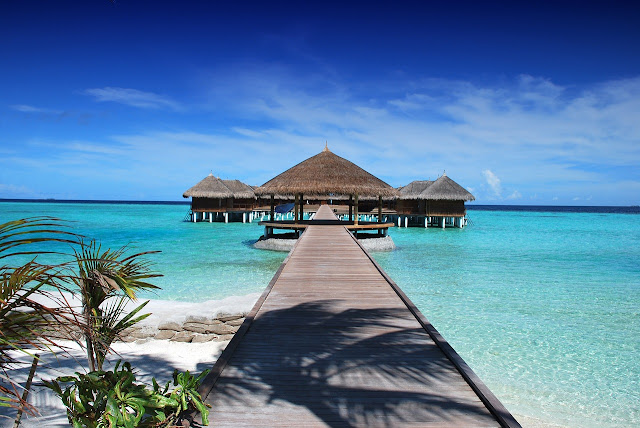Zamalek is home for palace. The peaceful, leafy alleys and 19th-century apartment complexes and villas make this one of the most picturesque areas of the city and a preferred home spot for many of Cairo's European expats, as well as because many foreign embassies are located in Zamalek.
It is also home to several good restaurants, pubs, and cafés, including traditional open-air ahwas and European cappuccino shops. The Gezira Island region is culturally busy, having art galleries and museums, including the Museum of Islamic Ceramics, as well as two of Cairo's major music and performing arts facilities, the Egyptian Opera House complex and the El Sawy Culture Wheel Centre.Several Zamalek buildings are in the Art Deco style.
CONTENTS:
- ARCHITECTURE PRINCE AMR IBRAHIM PALACE
- THE MUSEUM OF ISLAMIC CERAMICS CAIRO LOBBY
- THE 10TH AND 12TH CENTURY FATIMID SECTION OF THE MUSEUM
- THE 16TH, 17TH, AND 18TH CENTURIES OTTOMAN SECTION OF THE MUSEUM'S
- THE MUSEUM'S EGYPTIAN SECTION
- THE MUSEUM OF ISLAMIC CERAMICS CAIRO - SECOND FLOOR
- THE MUSEUM OF ISLAMIC CERAMICS CAIRO - THE PRINCE'S SECTION
- THANK YOU FOR THE SOURCE PHOTO AND ARTICLE OF THE MUSEUM OF ISLAMIC CERAMICS CAIRO AND PRINCE AMR IBRAHIM PALACE ARCHITECTURE
ARCHITECTURE PRINCE AMR IBRAHIM PALACE
READ MORE: AISHA FAHMY PALACE: CAIRO BEAUTIFUL TREASURE
Prince Amr Ibrahim Palace was constructed on the instructions of Prince Amr Ibrahim (1903-1977), a member of the Muhammad Ali family who married Necla Sultan, the granddaughter of Ottoman sultan Mehmed VI, in 1921. The palace served as a summer house for Prince Amr Ibrahim and his wife, Necla Sultan. On November 9, 1953, the palace was declared a state property.
This specific construction was designed by Garo Balian as a neo-Islamic monument that would transcend time and space in the 1920s. Garo Balian a prominent Ottoman court architects and the youngest member of the Balyan family. The palace's architectural style is neo-Ottoman and neo-Islamic. In terms of architectural and ornamental design, it also represents major styles of the Muhammad Ali dynasty. The palace's architecture is also influenced by Moroccan and Andalusian styles.
The construction cost around 200 million euros ($257 million).The palace differed in style and personality from the ordinary array of fabricated Trianons and Venetians. discrete wooden mashrabeyas replaced French bay windows; domes with symmetric patterns gained precedence over guilded ceilings with pastoral impressions; Cararra marble replaced parquet; and magnificent porcelain faience doubled as a gallerie de glaces (mirror gallery). Exquisite oriental mishksas and lanterns hung from the lofty ceilings, a delightful break from the ormolu and crystal de Boheme.
READ MORE: MANIAL PALACE , MUSEUM AND HISTORY OF PRINCE MUHAMMAD ALI TAWFIK
READ MORE: THE MUSEUM OF ISLAMIC CERAMICS CAIRO AND PRINCE AMR IBRAHIM PALACE ARCHITECTURE
THE MUSEUM OF ISLAMIC CERAMICS CAIRO LOBBY
The foyer, positioned at the entrance to the museum, is in the heart of the palace. It is distinguished for its magnificent fountain and outstanding marble and gypsum embellishments. Above the palace's foyer is a one-of-a-kind Mamluk-style dome with a square shape and elaborately adorned with colourful glass on each side. This portion is distinguished by a big copper chandelier. The foyer houses a variety of displays manufactured in Syria during the 12th and 13th centuries, including pitchers, pots, cups, and other bowls that are highly intriguing to first-time visitors to the museum.
THE 10TH AND 12TH CENTURY FATIMID SECTION OF THE MUSEUM
The Fatimid area of the Museum of Islamic Ceramics is one of the most notable in the museumIt is adorned with Arabic and Turkish calligraphy, exquisite white, blue, and red Ottoman tiles, and various plants shaped Arabian style embellishments.
In the centre of the hall sits a marble dining table that was once part of the palace's furnishings. It is presently utilised to showcase a variety of intriguing artefacts such as oil bottles, miniature flowerpots, and Ottoman era royal seals made of earthenware Other tables in this part have wooden windows that house famous traditional clay jars (the Egyptian Ola), pots, bottles, and a variety of other intriguing things manufactured during Egypt's Fatimid period, for a total of 72 separate exhibits.
THE 16TH, 17TH, AND 18TH CENTURIES OTTOMAN SECTION OF THE MUSEUM'S
The Ottoman part features big Mashrabeya screen windows, the renowned red, white, and blue Turkish style tiles on the walls, and some impressive gypsum embellishments.
THE MUSEUM'S EGYPTIAN SECTION
The Ottoman section includes artefacts made in Egypt during various eras of Islamic history, including the Umayyad, Ayoubid, Mamluk, and Ottoman periods. features six display glasses with over 40 products displayed in varied sizes and uses. This section's objects are highlighted by their basic yet appealing ornaments and hues with calligraphy, geometric, animal, and plant outline embellishments.
exhibits from the Turkish and Persian traditions, distinguished by the plant's trappings Included in this category are flowerpots, pitchers, and bowls. Among the most notable exhibits in this part is this Parisian-style pitcher with an animal's head, a regal style popular among Mohamed Ali's family.
THE MUSEUM OF ISLAMIC CERAMICS CAIRO - SECOND FLOOR
An interior staircase runs from the palace's lobby to the top level, which overlooks the foyer and various other portions of the museum. This was the (Haramlek) of the palace, or the area designated for the proprietors of the home to feel at ease in. This section is dedicated to Persian displays, which include several pitchers, plates, cups, and bowls that have a gleaming appearance as if they were made of metals. The decorations differ in that some adhere to the basic animal and plant outline of decorations, but others are far more complex in their embellishments and colours.
THE MUSEUM OF ISLAMIC CERAMICS CAIRO - THE PRINCE'S SECTION
This part is one of the components of the museum's second level. It is made up of an outside chamber, a central room, and a bathroom. The outer room is square in form, with a wooden wall nearest to it that is covered with mother of pearl. A little magnificent fountain covered in marble and a number of ornate bookcases are located on the left side of the room.
All of these pieces are among Amir Amr Ibrahim's original furnishings and possessions. This room only has five exhibits. The first is a plate from the 18th century created in Morocco. The other four artefacts were manufactured in Syria around the 12th century. The middle chamber, or prince's hall, is notable for its baroque and rococo forms of ornamentation, which are merged with the Turkish and Islamic outlines that dominated Egypt at the end of the 19th century and the beginning of the 20th century.
The hall of the prince has some marvelous furniture which includes a decorated wooden sofa, a mother of pearl decorated wooden box which was used to store the jewelry and the valuables items of the prince.
ADDRESS THE MUSEUM OF ISLAMIC CERAMICS CAIRO AND PRINCE AMR IBRAHIM PALACE
22 Mohammed Abd El-Wahab, Omar Al Khayam, Zamalek, Giza Governorate 4270163
THANK YOU FOR THE SOURCE: PHOTO OWNER AND ARTICLE OF THE MUSEUM OF ISLAMIC CERAMICS CAIRO AND PRINCE AMR IBRAHIM PALACE ARCHITECTURE


































0 Comments